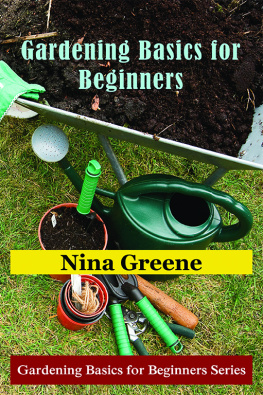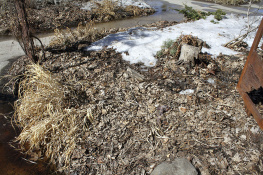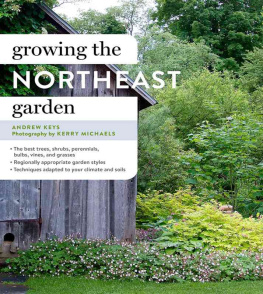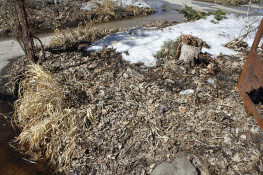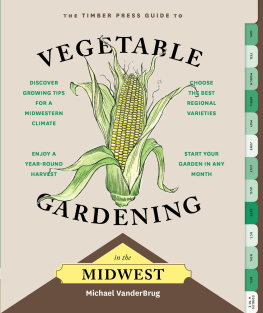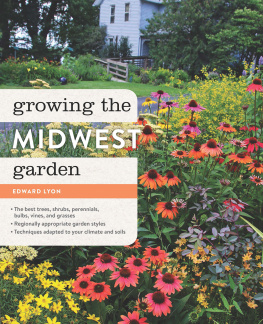GARDENING
IN THE LOWER
MIDWEST
Gardening
IN THE LOWER
MIDWEST
A Practical Guide for the
New Zones 5 and 6
Diane Heilenman

Photograph of Diane Heilenman and Buttons
by Pam Spaulding
1994 by Diane Heilenman
All rights reserved
No part of this book may be reproduced or utilized in any form or by any means, electronic or mechanical, including photocopying and recording, or by any information storage and retrieval system, without permission in writing from the publisher. The Association of American University Presses Resolution on Permissions constitutes the only exception to this prohibition.
The paper used in this publication meets the minimum requirements of American National Standard for Information SciencesPermanence of Paper for Printed Library Materials, ANSI Z39.48-1984.

Manufactured in the United States of America
Library of Congress
Cataloging-in-Publication Data
Heilenman, Diane, date
Gardening in the lower Midwest : a practical guide for the new zones 5 and 6 / Diane Heilenman.
p. cm.
Includes bibliographical references (p. ) and index.
ISBN 0-253-32811-X (cloth). ISBN 0-253-32813-6 (paper)
1. GardeningMiddle West. 2. GardeningKentucky. I. Title.
SB453.2.M53H45 1994
635.0977dc20 93-33827
2 3 4 5 00 99 98 97
CONTENTS
Introduction: Garden Smarts
Many Missouri orchardists have heard cautionary tales about the Armistice Day Freeze. Thats the memorable day in November 1940 when the temperature dropped sixty degrees in three hours. Not surprisingly, many fruit treesamong other plantswere killed to the ground. There is no record of the response among orchardists and gardeners, but we can pretty well guess.
More recently, there was the devastating single-digit and below-zero killer cold in December 1989, which hit us before plants were fully dormant, decimating gardens. It took out so much nursery stock that professionals and amateurs alike considered quitting. In fact, every year has its moments. Some years well have a drought; other times we get too much rain, say, three inches in half an hour. We have windstorms, ice storms, tornadoes. Early one morning in October 1988, before the leaves had fallen, Bloomington, Indiana, received two inches of wet, heavy snow. All day long, tree limbs and entire trees were crashing down all over town.
And, as I write, 1993 has brought the storm of the century. For us, it was a typical springbalmy one day and bitter the next. The line of deep snow and bitter cold began about eighty miles east of my garden, at Lexington, Kentucky. It essentially missed us, but gave gardeners in Tennessee and Georgia a once-in-a-hundred-years taste of what midwesterners suffer yearly.
If you are reading this book, presumably you garden or contemplate gardening in hardiness zones 5 or 6 of the Lower Midwest. If you have gardened here even one season, you know these are the Zombie Zones. Everybody likes to think his or her weather is the worst, but we live where wild temperature swings are normal.
Its close to a certainty in the quixotic zones 5 and 6 that one yearor even two or three in a rowyou may have winter lows so high that the plants think theyve died and gone to Tidewater Virginia, and the next year you may have temperatures so low the plants just die.
However, the problem may be the opposite. Our summers can get too hot too soon, which has greatly influenced my decision not to grow delphiniums in the Ohio River Valley. Our springs can swing like a pendulum. Winter warm-ups may be accented by dots of yellow blossoms on forsythia bushes, which everyone knows dont have the sense to stay dormant more than a week, followed by spring frosts ill-timed for your horticultural ambitions in the realm of peach, almond, pecan, and magnolia flowersamong others.
This book is about how to get along with such difficult and trying weather in the Zombie Zones. It also is a distinctly personal account of how I think you might go about the business of being a modern gardener, a role that has broadened in the late twentieth century from cutting the grass and growing a few tomatoes and dahlias to an entire lifestyle sometimes fraught with moral responsibility, social mobility, and political correctness.
My viewpoint is from northern Kentucky, which may seem an odd perch for writing about the Midwest. Indeed, as a native Kentuckian, I was brought up to believe in the southern nature of this state. It was a small family joke that my mother, who was accidentally born on the other side of the Ohio River in nearby Cincinnati during a visit, was a northerner. There are some social and political reasons for this iconoclastic notion. Kentucky was once part of Virginia, definitely a southern sort of place, and the artificial boundary of the Mason-Dixon line separating North from South in the Civil War corresponds to the Ohio River.
But when it comes to gardening, Kentucky is a close cousin of the Midwest and a mere distant relative to the South. It takes only a little travel to perceive geographic similarities among Ohio, Indiana, Illinois, Missouri, the lower reaches of Iowa and Michigan, and the upper reaches of Kentucky. Our soils may be different; our levels of humidity vary; but we all stand in the vast drainage basin of the Mississippi River, which was created to Gods own scale and extends from the Appalachian Mountains to the Great Lakes and the Rocky Mountains.
It takes only a little experience with the endless round of putting on and taking off of coats in this region to perceive that we are at the center of some of the continents great weather battles. We live and garden in a big transition area between cold, dry polar air and moist, mild tropical air.
Meteorologists tend to symbolize these forces as vast sailing ships. They even call a cold swing across the country an Alberta Clipper. To my mind, it is more like two flocks of birds. One travels unimpeded and quickly, moving across the Great Plains to sweep in along Iowa, turn right at the Mississippi, and drop like a rock through Illinois and Indiana, thence to hover over Kentucky and Ohio, where it is stymied by the southern flock of warm air beating its way slowly up from the Gulf of Mexico, winging through Louisiana and the South, bringing moisture along like a trace scent of algae in the air. Some members of each flock may drop out, hovering in one area for a time and causing pockets of rain or cold or wind that have one gardener ecstatic and another a mile away cursing. Such effects are basically transitory. Droughts occur over large areas, and a wet winter tends not to be spotty.
Knowing your weathers patterns year after year is what allows you to say a winter is mild or brutal. It gives you as a gardener knowledge of the climate, or larger changes that occur on a bigger scale in a region. If you know your climate and your plants, you can come up with a personal and fairly accurate definition of hardiness.
Interestingly, plants rather than weather were the basis for classification of climatestropical wet, tundra, highlands, warm summer continental (thats us), or cool summer continental. It may startle you to realize that our regions climatic counterparts are in Japan, China, and a block of Eastern Europe including parts of Ukraine, Bulgaria, and Rumanianot in England and Europe, whence some gardeners think we should buy all our plants. Those are part of cool summer continental regions and are only marginally like us in gardening terms. They do not have the wide swings of our Zombie Zones. (Incidentally, the person who worked out all these geologic regions around 1900 was a Russian-born meteorologist and climatologist, Wladimir Kppen.)
Next page

